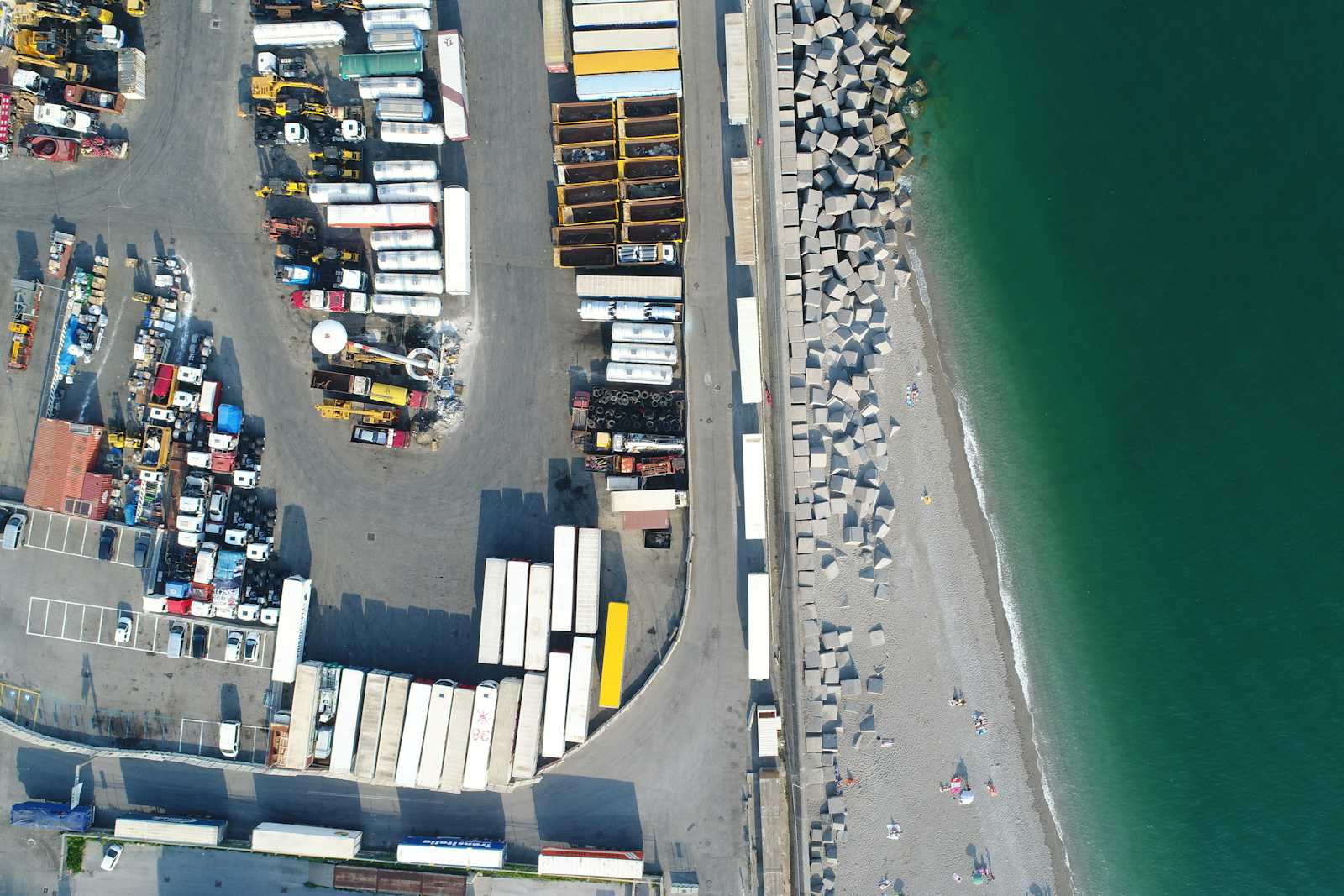Container Security Best Practices: Securing Containerized Applications
 Abhiram
Abhiram
In the age of digital transformation, containerization has emerged as a revolutionary technology for building, deploying, and scaling applications. By leveraging containers, developers can package their code with all its dependencies into a lightweight, portable unit that can run consistently across any infrastructure. This approach offers numerous advantages, including:
Increased agility and speed: Containers enable rapid development, testing, and deployment cycles.
Improved scalability: Applications can be easily scaled up or down by adding or removing containers.
Enhanced portability: Containers run seamlessly across different environments, from on-premises data centers to public clouds.
Resource efficiency: Containers utilize resources more efficiently compared to traditional virtual machines.
However, alongside these benefits, containerization also introduces a new security landscape. Containers share the kernel of the underlying host operating system, which can create potential vulnerabilities if not secured properly. Malicious actors are increasingly targeting containerized environments, exploiting security misconfigurations or vulnerabilities in container images to gain access to systems and data.
The Importance of Image Scanning and Vulnerability Management
To ensure the security of containerized applications, a two-pronged approach is essential: image scanning and vulnerability management.
Image Scanning: This involves inspecting container images for vulnerabilities, malware, and other security threats. This can be done at various stages of the development lifecycle:
Pre-build stage: Scanning base images before code is added helps identify vulnerabilities in the underlying operating system or libraries.
Build stage: Scanning during the build process detects vulnerabilities introduced by the application code itself.
Post-build stage: Scanning after the image is built ensures no vulnerabilities were introduced during the build process.
Vulnerability Management: Involves the systematic identification, prioritization, and remediation of vulnerabilities discovered in container images. This process includes:
Vulnerability prioritization: Not all vulnerabilities are equal. It's crucial to prioritize vulnerabilities based on their severity, exploitability, and potential impact.
Vulnerability remediation: Once vulnerabilities are prioritized, they need to be addressed promptly. This may involve patching the vulnerable packages within the image, upgrading to a secure version, or implementing compensating controls.
By implementing a robust image scanning and vulnerability management program, organizations can significantly reduce the risk of deploying containers with inherent security weaknesses.
Best Practices for Secure Containerization
Securing containerized environments requires a comprehensive approach that spans the entire container lifecycle, from image creation to runtime. Here are some key best practices to consider:
1. Secure Image Creation and Building
Use minimal base images: Start with a minimal base image that only contains the essential operating system components required for your application to run. This reduces the attack surface and minimizes the number of potential vulnerabilities.
Implement a vulnerability scanning pipeline: Integrate image scanning tools into your CI/CD pipeline to automatically scan images for vulnerabilities at each stage of the build process.
Enforce code signing: Digitally sign your container images to ensure their integrity and authenticity. This prevents unauthorized modifications and helps to detect tampering.
2. Image Signing and Verification
Implement a container image signing process to cryptographically sign container images.
Enforce signature verification at runtime to ensure the image hasn't been tampered with since it was signed.
Use a trusted registry to store and distribute signed images.
3. Container Runtime Security
Minimize container privileges: Containers should only have the privileges required to execute the application. This principle of least privilege helps to mitigate the impact of potential vulnerabilities.
Use security profiles: Container runtime environments like Docker and containers allow for the creation of security profiles that define the security capabilities of a container.
Enforce resource restrictions: Limit the CPU, memory, and other resources available to containers to prevent them from consuming excessive resources or impacting the performance of other containers.
4. Network Security for Containers
Implement network segmentation to isolate container traffic and prevent unauthorized access.
Use firewall controls to restrict inbound and outbound network traffic for containers.
Consider using overlay networks to provide secure and scalable networking for containerized applications.
5. Orchestrator Security
Secure the container orchestration platform, such as Kubernetes. This includes hardening the underlying operating system, using strong authentication and authorization mechanisms, and keeping the platform software up to date.
Implement role-based access control (RBAC) to grant users only the permissions they need to interact with the container orchestration platform.
Regularly audit the container orchestration platform for misconfigurations and vulnerabilities.
6. Incident Response and Recovery Planning
A robust incident response plan is crucial for mitigating the impact of a security breach. Here are the key components:
Incident detection: Implement monitoring tools to detect anomalies and potential threats within container environments.
Incident response team: Assemble a dedicated team responsible for handling security incidents.
Communication protocols: Establish clear communication channels for coordinating incident response efforts.
Containment: Isolate compromised containers to prevent further damage.
Investigation: Conduct a thorough investigation to determine the root cause of the incident.
Remediation: Implement necessary measures to address the vulnerabilities exploited in the attack.
Recovery: Restore systems and data to their pre-incident state.
Lessons learned: Analyze the incident to identify areas for improvement and update the incident response plan accordingly.
Continuous Monitoring and Evaluation
Container security is an ongoing process. Regular monitoring and evaluation are essential to identify and address emerging threats.
Container runtime monitoring: Continuously monitor container behavior for signs of suspicious activity.
Vulnerability scanning: Regularly scan container images and running containers for vulnerabilities.
Compliance checks: Ensure compliance with security standards and regulations.
Security audits: Conduct regular security audits to assess the overall security posture.
Case Studies and Real-World Examples
Learning from real-world examples can provide valuable insights into the consequences of neglecting container security. Several high-profile data breaches have been attributed to vulnerabilities in containerized environments.
Case study 1: Discuss a specific data breach involving a containerized application and analyze the root cause.
Case study 2: Highlight a company that successfully implemented container security best practices and the benefits it realized.
Conclusion
Containerization offers numerous advantages, but it also introduces new security challenges. By adopting a comprehensive approach to container security, organizations can protect their applications and data from malicious attacks.
Key takeaways:
Image scanning and vulnerability management are fundamental to securing containerized applications.
Secure image creation, runtime security, and network security are essential components of a robust container security strategy.
Incident response planning and continuous monitoring are crucial for mitigating risks.
By following these best practices and staying informed about the latest threats, organizations can build and deploy secure containerized applications with confidence.
Additional Tips:
Provide practical examples and code snippets to illustrate security concepts.
Consider creating a checklist of container security best practices for readers.
Offer additional resources for further learning, such as whitepapers, webinars, and online courses.
By incorporating these elements, you can create an engaging and informative blog post that empowers readers to strengthen their container security posture.
People also read
Subscribe to my newsletter
Read articles from Abhiram directly inside your inbox. Subscribe to the newsletter, and don't miss out.
Written by
